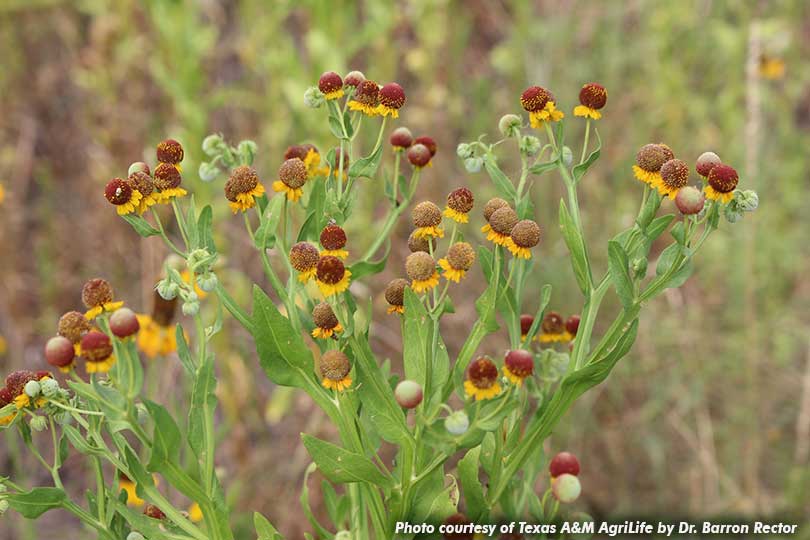There is a weed creeping across Texas fields that is of concern for ranchers and livestock.
The small-headed sneezeweed is very poisonous in the flowering stage to mainly sheep, but cattle, goats, mules and horses are also susceptible, according to Dr. Barron Rector, Texas A&M AgriLife Extension range specialist in College Station.
Rector said the weed falls in the sunflower family and is a native, warm-season annual. The plant grows statewide except for the East Texas Piney Woods and extends into northern Mexico.
Dr. Cat Barr, Texas A&M Veterinary Medical Diagnostic Lab’s toxicologist in College Station, said this plant can cause “spewing sickness.”
“Ruminants technically regurgitate from abomasum backward into the rumen, but this plant irritates the gastrointestinal tract so much that even cattle will vomit plant material and have green slobber and nasal discharge,” Barr told AgriLife Today. “You can imagine how a horse would colic, as well.”
Rector said symptoms caused by consuming sneezeweed include weakness, staggering, diarrhea, vomiting, salivation, bloating, groaning and grinding of teeth, sticky non-pelleted feces and gastroenteritis.
Poisoned animals can have forced and fast respiration and nasal discharge.
Barr noted signs of illness will appear within a few hours after consuming sneezeweed and animals may convulse prior to death.
“Not much else causes an illness that looks like this,” Barr said. “But if you need confirmation, our laboratory can examine the rumen content or stomach content microscopically and identify the plant material. We’re here to assist your veterinarian with a diagnosis.”
Some studies have shown that consuming as little as one-quarter of a percent of an animal’s body weight produced acute poisoning and death, according to Rector. Mature plants are more toxic than the seedlings.
Rector said the plant, also commonly called “small sneezeweed” and “sneezeweed,” occurs in small localized areas on moist habitats of silty, clay loam and sandy soils around ponds, tanks, bar ditches and especially in ephemeral or dry creek bottoms.
Wet weather in fall followed by a wet spring usually assures a good crop of seedlings, Rector said.
The plants have a single basal stem that can grow to a height of about four feet. The plant is characterized by having stem leaves that are alternate, lanceolate or oblong and are decurrent, running down the somewhat angled stem.
“Generally these plants flower in June and July, but with a warm winter and spring, they are flowering in mid-May,” Rector said.
Hand pulling, mowing or burning sneezeweed may be the most effective management options because the plants are usually found in localized areas in a pasture, according to Rector. Fencing livestock away from localized infected areas can reduce or eliminate potential problems.
The most effective treatment with a herbicide is when the plants are 4-6 inches in height. The plants may be treated with ground broadcast applications before flowering when the plants are actively growing.
Rector noted most grazing animals will not eat sneezeweed unless they are in a state of hunger or searching for green material or forage under conditions when grasses have matured and are in short supply.
“Your management and observation are needed to keep this plant from becoming your next problem,” Rector said. “It is a good idea to scout areas where you have seen this plant growing in previous years.”

